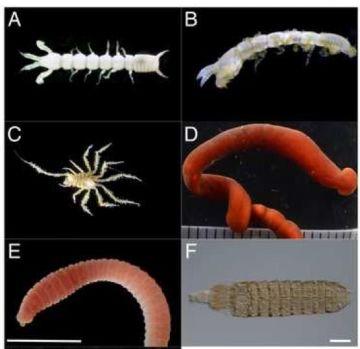Research News
50 new marine species found around Sagamihara Bay
A critical issue of biodiversity conservation tends to be discussed regarding the animals on land. However, in the ocean, there are so many living marine animals which are not found yet by human being. Japan with wide and various kinds of coastlines has more than 20 public research institutes and facilities to study marine biology. JAMBIO, Japanese Association for Marine Biology, are a research community of the marine biologists of public marine biological research institutes and abroad for good collaboration. Professor Hiroaki Nakano at the University of Tsukuba and 18 other researchers of 10 research institutes in Japan united to conduct "JAMBIO coastal marine biological investigation" around the Sagamihara bay. As a result, they collected about 50 new unknown marine animals.This research aimed at investigating species of marine animals around the Sagamihara bay and close sea area with the size of several cm. About 109 researchers from 15 domestic research institutes participated in the program held up to six times. While some research samples acquired from the six investigations still remain for identifying the species, at least 18 phyla and 250 species of marine animals were found by the research, including 50 new species. The notability of the research findings is not only biodiversity and animal taxonomy, but also system-geography, ecology and environmental studies. The research team will continue to the investigation of the marine animals around the Sagamihara bay so that they can understand the richness of Japanese wild marine animals and can establish the network of marine biologists.

Animals collected in the JAMBIO Coastal Organism Joint Surveys. A: An unidentified species of the genus Tanaella (Arthropoda: Tanaidacea). B: Another undescribed species of the Tanaidacea (genus Agathotanais). C: An undescribed species of the genus Munna (Arthropoda:Isopoda). D:Anterior end of body of an undescribed species of the palaeonemertean genus Tubulanus (phylum Nemertea).
Original Paper
Hiroaki Nakano et al., JAMBIO Coastal Organism Joint Surveys reveals undiscovered biodiversity around Sagami Bay, Regional Studies in Marine Science, 2:154-157 (2015). doi:10.1016/j.rsma.2015.05.003


